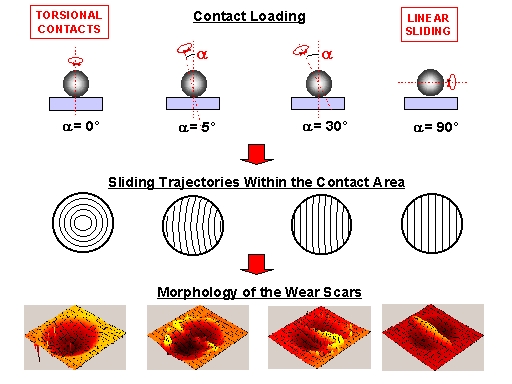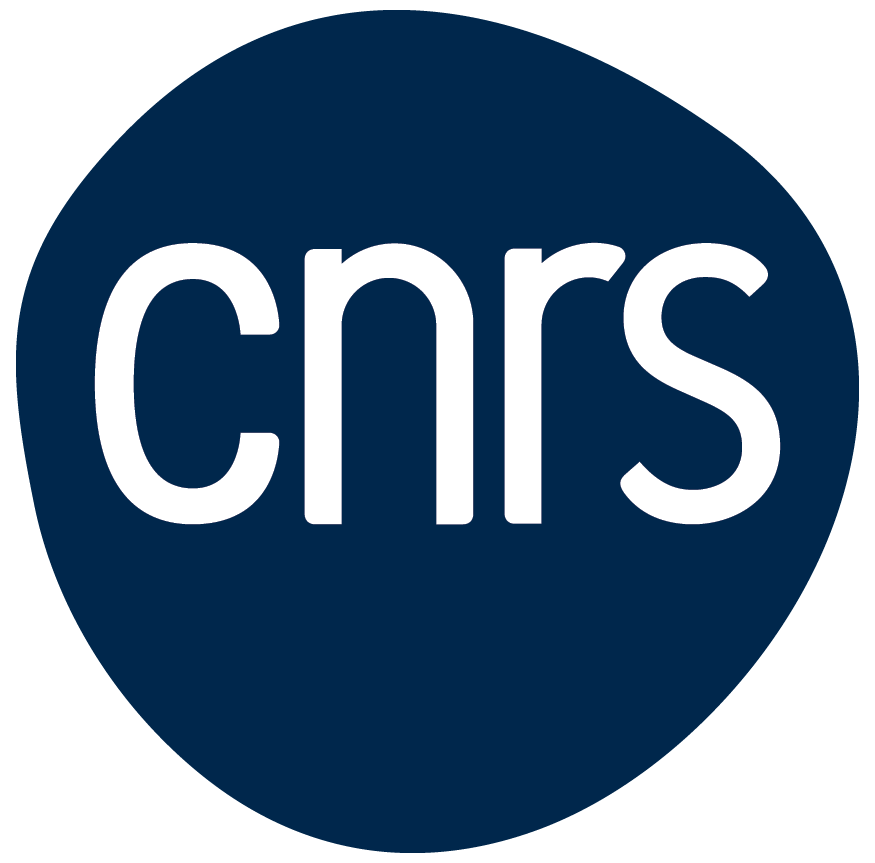 The objective was to analyse the effects of the contact zone kinematics on the formation of third bodies within dry contacts between polymers and rigid counterfaces. This problem is relevant of many practical tribological applications where complex sliding motions are induced by the mechanical loading of the contacting parts (hip joints, gears...).
The objective was to analyse the effects of the contact zone kinematics on the formation of third bodies within dry contacts between polymers and rigid counterfaces. This problem is relevant of many practical tribological applications where complex sliding motions are induced by the mechanical loading of the contacting parts (hip joints, gears...).
By means of an original fretting device, the wear behaviour of a PMMA/steel system has been investigated under frictional conditions combining, to various extents, torsional and linear sliding micro-motions.
With Prof. B.J. Briscoe
Particle Technology Group, Imperial College of Science Technology and Medicine, London, UK
Prof. T.C.Lindley
Materials Department, Imperial College of Science Technology and Medicine, London, UK
In many sliding systems, the accumulation and compaction of wear debris at the contact interface result in the formation of so-called ’third body’ layers which act, temporarily or permanently, as a transient phase between the rubbing surfaces. These third body formations are known to affect drastically the development of wear damage and the ultimate wear resistance of the contacting materials, by virtue of strong modifications in the contact pressure distribution (the contact ’load-carrying’ capacity) and in the manner the relative velocity between the primarily contacting surfaces is accommodated. The generation of debris particles and their subsequent compaction and flow at the contact interface depend on many parameters including the material properties, the loading conditions and the contact geometry. Amongst these parameters, the contact zone kinematics can have a profound influence in the sense that the magnitude and the direction of the relative displacements between the contacting surfaces is a critical factor regarding the critical particles elimination processes. Although complex contact loading are encountered in many tribological applications involving polymers (hip joints replacements, gears...), the effects of contact zone kinematics conditions on the generation and the rheological properties of polymer third bodies remains, however, largely unexplored.
The objective of this study is the fundamental understanding of the interrelationships between the contact zone kinematics conditions, the generation of third body agglomerates and the ultimate wear resistance of polymers contacting rigid non-degrading counterfaces. These processes have been investigated within the context of a model steel/poly(methylmethacrylate) (PMMA) contact under small amplitude oscillating sliding micro-motions, i.e. fretting . The study involved the following main aspects : ·
- The development of an original fretting device which allows to combine, to various extents, torsional and linear sliding micro-motions.
- The theoretical and experimental investigation of the initial contact loading conditions under combined torsional and linear sliding micro-motions. This part of the study involved a new approach based on the measurement of friction induced surfaces strains by means of miniature strain gages.
- The analysis of the third body accumulation processes and their effects on the ultimate volumetric wear resistance of the PMMA substrate ·
- The ex situ investigation of the third body nano-rheological behaviour by means of nano-indentation characterizations.

This Figure illustrates the changes in the morphology of the PMMA wear scars when the tilt angle a is varied from 0° (i.e. torsional contact conditions) to 90° (i.e. linear sliding). The progressive accumulation and compaction of PMMA particles into a major roll can be noted under the linear sliding dominated contact conditions.
Related publications
A. Chateauminois, B.J. Briscoe
Nano-rheological properties of polymeric third bodies generated within fretting contacts
Surface and Coatings Technology, 163-164 (2003) 435-443
B.J. Briscoe, A. Chateauminois
"Measurements of friction induced surface strains in a steel/polymer contact"
Tribology International, 35 (2002) 245-254
B.J. Briscoe, A. Chateauminois, J. Chiu and S.Vickery
"Acoustic noise emission in a model PMMA/steel fretting contact"
in Tribology Research : From Model Experiments to Industrial Problems, G. Dalmaz et al (Editors), Tribology Series, Elsevier, 39 (2001) 673-681
B.J. Briscoe, A. Chateauminois, T.C. Lindley, D. Parsonage
"Contact damage of poly(methylmethacrylate) during complex micro-displacements"
Wear, 240, N°1-2 (2000) 27-39
B.J. Briscoe, A. Chateauminois, T.C. Lindley, D. Parsonage
"Fretting wear behaviour of PMMA under linear motions and torsional contact conditions"
Tribology International, 31, N°11 (1998) 701-711


